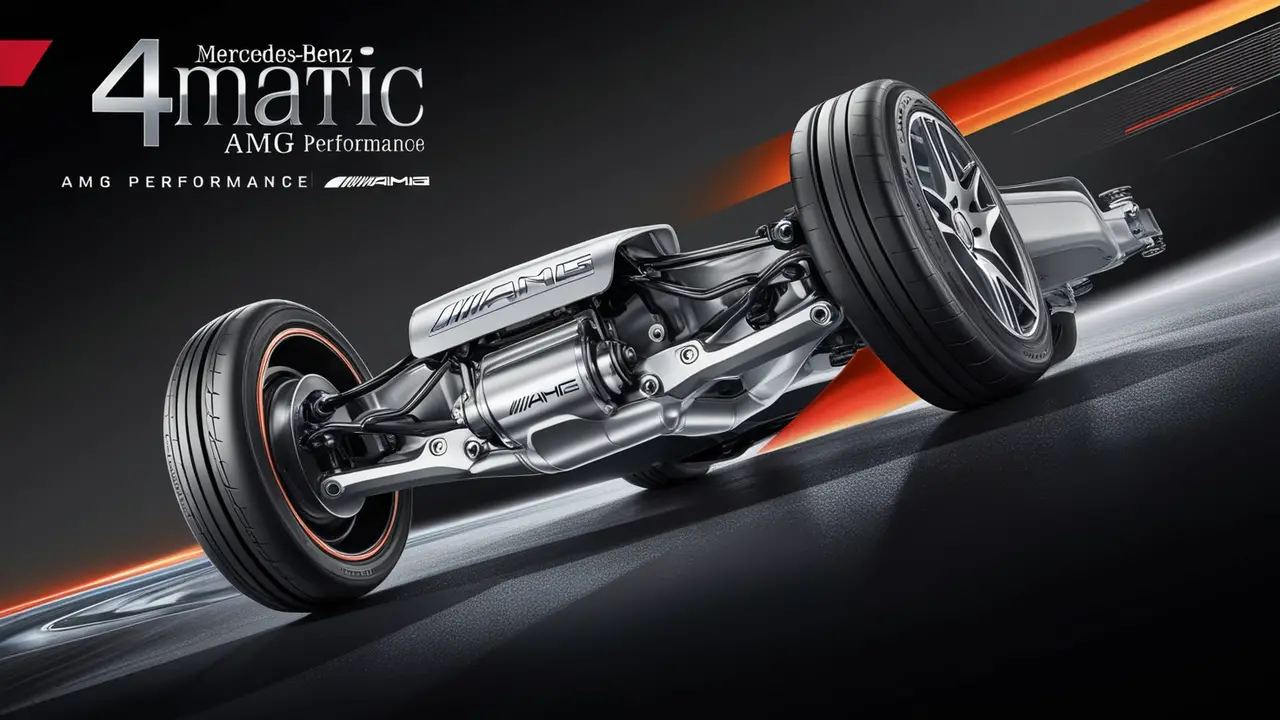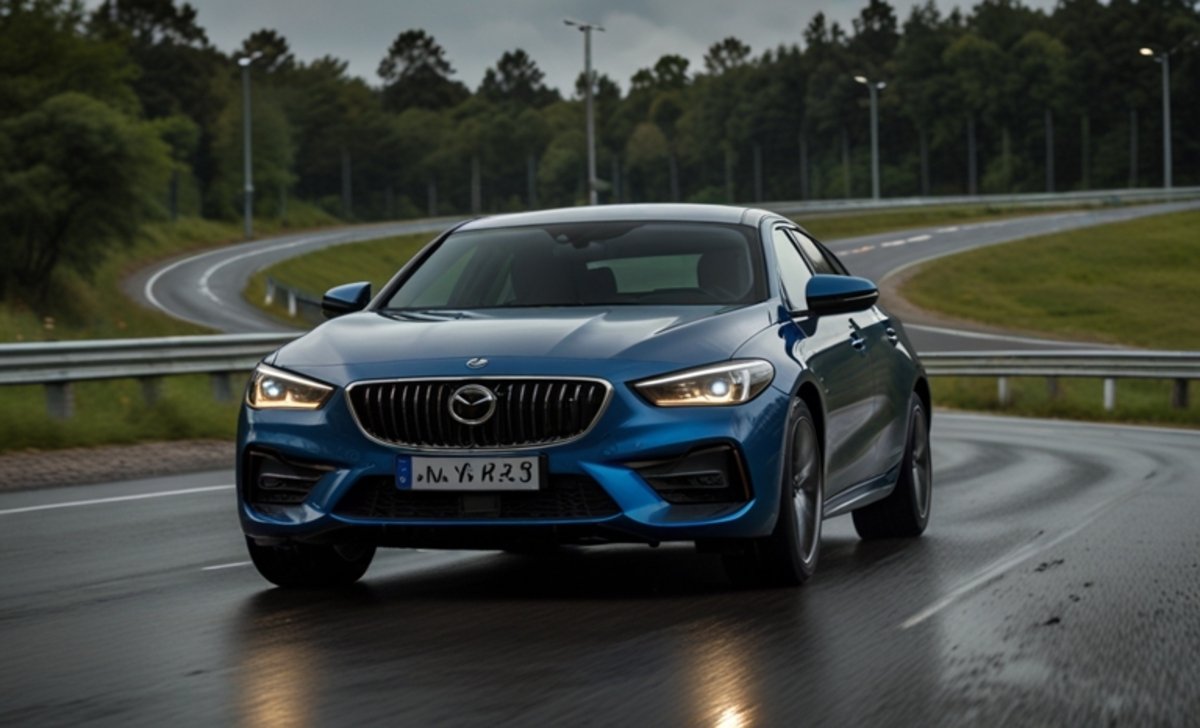The term “4MATIC” is Mercedes-Benz’s proprietary all-wheel drive (AWD) system, designed to enhance the vehicle’s traction, handling, and stability in various driving conditions.
Introduced in the 1980s, 4MATIC technology has evolved significantly, incorporating advanced engineering to provide a seamless and safe driving experience. You may have questions about what the 4MATIC feature actually does in any Mercedes-Benz car.

Key Takeaways:
- 4MATIC® is Mercedes-Benz’s advanced all-wheel-drive (AWD) system, providing enhanced traction, stability, and performance across various road conditions, available in Permanent AWD, Variable AWD, and AMG Performance 4MATIC® versions.
- It optimally distributes power between front and rear axles for improved handling and safety, and is available on a wide range of Mercedes-Benz cars and SUVs like the GLE, GLC, and G-Class models.
Let’s Explain, What Does 4matic Mean In A Mercedes Benz

4MATIC® is Mercedes-Benz’s all-wheel-drive (AWD) system designed to enhance vehicle performance, traction, and safety across various road conditions. It automatically adjusts the distribution of power between the front and rear axles, ensuring that all four wheels receive optimal torque when needed, giving drivers greater control, stability, and confidence.
- AMG Performance 4MATIC®: For high-performance models like those in the AMG Line, AMG Performance 4MATIC® takes the 4MATIC® system to the next level, optimizing power and agility.
- Rear Axle and Differential: 4MATIC® also includes sophisticated differential technology for torque distribution between the front and rear axles.
- The system continuously adjusts to the current road condition by detecting wheel slip and modulating power distribution.
Key Features Of 4MATIC

- Distributes power to all four wheels to improve grip on slippery surfaces.
- Reduces the risk of wheel spin and loss of control.
- Provides better handling and cornering stability.
- Enhances vehicle stability by adjusting power distribution based on driving conditions.
- It works in conjunction with other safety systems, such as the Anti-lock Brake System (ABS) and the Electronic Stability Program (ESP), to enhance overall vehicle safety.
- Helps maintain control in challenging driving scenarios.
- Optimizes power delivery for a smoother and more responsive driving experience.
- Offers a balance of power and efficiency for both on-road and off-road driving.
- Available in various models and configurations to suit different driving needs and preferences.
- Designed to automatically adapt to changing road conditions without driver intervention.
Different Variations Of 4MATIC® AWD
Mercedes-Benz’s 4MATIC® all-wheel-drive system is designed to enhance performance and safety across a range of driving conditions. As a key feature in many Mercedes-Benz models, 4MATIC® offers several variations to suit different driving needs and vehicle types.
These variations optimize traction, stability, and handling, whether you navigate challenging weather or enjoy dynamic driving on diverse terrains. Here’s an overview of the different types of 4MATIC:
1.4matic® Permanent All-Wheel Drive
Description: This system distributes power to all four wheels continuously, providing consistent traction and stability. It is ideal for challenging road conditions, such as snow, ice, or wet surfaces.
Key Features:
- Full-time AWD: Always active, ensuring maximum traction.
- Torque Distribution: Typically a 50:50 split between front and rear axles, but it can vary depending on conditions.
- Benefits: Enhanced safety and stability in adverse weather conditions.
Common Applications: Larger vehicles like SUVs (e.g., GLE, GLS), where maintaining control in off-road or poor weather conditions is crucial.
2.4matic® All-Wheel Drive
Description: This system is designed to engage all-wheel drive as needed, usually starting with rear-wheel drive and then distributing power to the front wheels when additional traction is required.
Key Features:
- Adaptive AWD: Shifts between two-wheel and four-wheel drive based on driving conditions.
- Torque Distribution: Typically, rear-wheel drive is biased but can adjust power distribution dynamically.
- Benefits: Improved fuel efficiency compared to permanent AWD systems.
Common Applications: Sedans and smaller SUVs (e.g., C-Class, E-Class, GLC), where a balance of performance and efficiency is desired.
3.4matic® Variable All-Wheel Drive
Description: This advanced system offers a highly flexible power distribution between the front and rear axles, dynamically adjusting based on driving conditions and driver inputs. Some 4Matic cars can accelerate quicker; 0.2 seconds quicker to 60 mph in the GLA’s case.
Key Features:
- Highly Adaptive AWD: Continuously monitors and adjusts torque distribution.
- Torque Distribution: This can vary significantly, providing power where it’s needed most, often offering a more performance-oriented drive.
- Benefits: Superior handling and performance, especially in dynamic driving situations. This system automatically adjusts from front-wheel drive to a 50/50 front-rear split.
Common Applications: High-performance models (e.g., AMG versions) where precise handling and power delivery are critical.
Mercedes-Benz 4matic® Available Vehicle Options
Mercedes-Benz’s 4MATIC® all-wheel-drive system enhances driving performance by providing superior traction and stability. This advanced system is available across a diverse range of Mercedes-Benz vehicles, each tailored to offer distinct benefits and cater to various driving needs.
Whether you seek a luxury sedan, a versatile SUV, or a sporty coupe, the 4MATIC® system adapts to each model to ensure optimal handling and control in various driving conditions.
Mercedes-Benz Cars
- Mercedes-Benz CLA Coupe
- Mercedes-Benz CLS Coupe
- Mercedes-Benz S-Class
- Mercedes-Benz C-Class
- Mercedes-Benz E-Class
Mercedes-Benz SUVs
Conclusion
4MATIC in a Mercedes-Benz stands for a sophisticated all-wheel drive system that significantly enhances traction, stability, and overall driving performance. By integrating advanced technology and engineering, Mercedes-Benz ensures that 4MATIC provides a safe, dynamic, and enjoyable driving experience across various conditions.
Stay informed about any recall information and make use of Mercedes-Benz’s shopping tools to find the perfect model and special offers for vehicles with 4MATIC
FAQs
1.Is 4Matic Better Than AWD?
4MATIC is Mercedes-Benz’s branding for its all-wheel drive (AWD) system. Whether it is “better” than other AWD systems depends on specific vehicle performance, driving conditions, and personal preferences.
4MATIC enhances traction and stability in various conditions and features advanced technology to improve handling. However, other manufacturers also offer effective AWD systems tailored to different driving styles and terrain.
2.Can You Turn Off 4MATIC?
No, you cannot turn off 4MATIC in Mercedes-Benz vehicles as it is a full-time all-wheel-drive system. However, some models may allow you to adjust driving modes or traction settings, which can alter the power distribution between the front and rear wheels.
3.Is 4MATIC Automatic?
4MATIC is Mercedes-Benz’s automatic all-wheel drive system. It distributes power between the front and rear wheels as needed for optimal traction and stability, adapting to driving conditions without driver intervention.
4.Why Is Benz Called 4Matic?
Benz vehicles are called 4MATIC to denote their all-wheel-drive (AWD) system. The “4” represents the four wheels, while “MATIC” signifies the automatic power distribution to all wheels, enhancing traction and stability in various driving conditions.
This system improves handling, control, and driving safety, especially in adverse weather. 4MATIC is a hallmark of Mercedes-Benz, reflecting the brand’s commitment to performance and innovation in automotive engineering.
5.Can 4MATIC Drift?
Yes, 4MATIC all-wheel drive systems can drift, depending on the vehicle and conditions. While 4MATIC is designed for stability and traction, certain models, particularly performance-oriented ones, allow for controlled drifting by adjusting power distribution and using features like a sport mode.
6.What Are The Disadvantages Of The Mercedes 4MATIC?
While offering enhanced traction and stability, the Mercedes 4MATIC has some disadvantages. It can lead to increased vehicle weight, impacting fuel efficiency and performance. The system can also be more costly to maintain and repair compared to traditional two-wheel drive systems.
7.What Is 4Matic And AMG?
4MATIC is Mercedes-Benz’s all-wheel-drive system, enhancing traction and stability in various driving conditions. It distributes power to all four wheels, improving handling and performance.
AMG, short for Aufrecht, Melcher, and Großaspach, is Mercedes-Benz’s high-performance division, known for producing powerful, sporty vehicles with enhanced engineering, performance tuning, and distinctive designs.